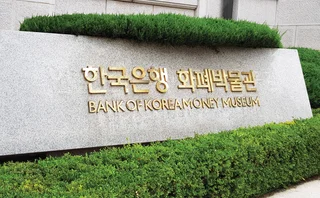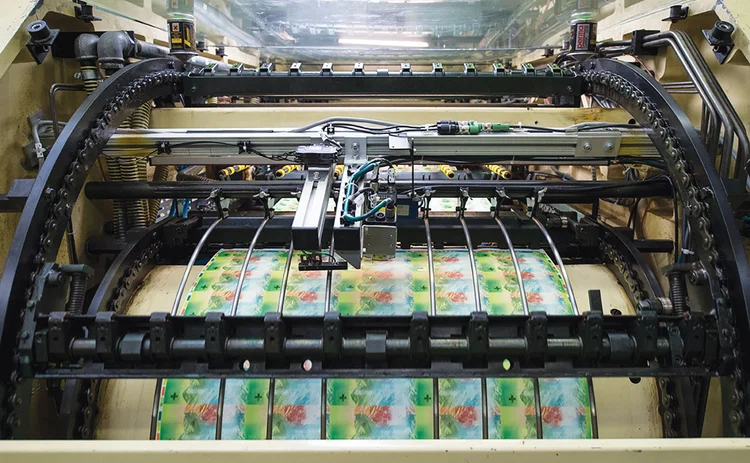
The winners of the 2018 Central Banking Awards
Bank of Canada, Lesetja Kganyago and Perng Fai-nan among those that stood out

Central Banking’s fifth annual awards recognise outstanding achievement within a community that has had to balance monetary accommodation and financial stability in an environment of rapid innovation, political change and global uncertainty.
The Bank of Canada – this year’s Central Bank of the Year – emerged as a beacon of best practice for much of the community, setting the standard for a transparent, operationally independent central bank. The judging panel, compromising members of Central Banking’s advisory board and editorial team, noted the Canadian central bank pursues its core areas of responsibility with exemplary openness and constantly challenges itself to generate improvements in a manner that is matched by few of its peers.
The Bank of Canada has also fostered an open debate on potentially changing its mandate – an effort admired by many – while its risk management approach to monetary policy has resulted in inflation hitting 2%, despite its raising benchmark interest rate three times since July 2017. A top-tier website and well-thought-out communications have lent additional support, while groundbreaking work on distributed ledger, internal ratings and currency management all show the Bank of Canada is willing to push the boundaries of modern central banking.
“Central banks are operating in a highly uncertain world,” says governor Stephen Poloz, in reaction to the award. “The more clear and honest we are about this uncertainty and what it means, the more effective we can be in our policies, operations and service to the public.”
Kganyago’s defence
Central Banking’s Governor of the Year, the South African Reserve Bank’s Lesetja Kganyago, faced a tough year. He had to defend the central bank against serious attacks from public institutions, maintain investor confidence when the nation’s debt was downgraded and weather a government reshuffle that threatened financial stability – while anchoring inflation expectations and building the Sarb’s capacity to handle its part of South Africa’s new ‘twin peaks’ supervisory regime.

“Governor Lesetja Kganyago has enhanced the Sarb’s reputation as he has striven to anchor inflation expectations, improve operations and build capacity – all the while standing firm against unwarranted political interference in his efforts to serve the people of South Africa,” says Christopher Jeffery, chairman of the Central Banking Awards Committee and editor-in-chief of Central Banking.
Asia’s steady hand
The winner of Central Banking’s Lifetime Achievement Award was outgoing governor of the Central Bank of the Republic of China (Taiwan) Perng Fai-nan. Perng had governed Taiwan’s central bank for over two decades, during which the island endured a remarkable period of stability, despite a number of global and regional disruptions threating its economy.
Known as the architect of Taiwan’s foreign exchange system, Perng oversaw the reformation of the central bank’s centre-rate system for foreign exchange early on in his career into what would in effect become a ‘managed float’. Since then, he has become the nemesis of currency speculators, successfully fending off their attacks with timely interventions, including during the Asian financial crisis.

“Not only has Perng successfully fulfilled the Taiwanese central bank’s legal mandates over the past 20 years, he has also carried out pioneering work and reshaped the thinking behind conventional central banking policy,” says Central Banking’s Jeffery.
An example of this is his repeated support of macro-prudential tools to prick asset bubbles, including the housing market in 2009.
“There has never been a dull moment in my career, and I expect life for those who are still toiling away will be just as exciting going forward,” says Perng. “Maintaining price stability, promoting financial system soundness, fostering economic growth – or some combination of the three – are the most common legal mandates of central banks. The biggest challenge facing the next generation of central bankers will be how effectively they can achieve these objectives … in a modern climate where international forces, be they political, economic or financial, can bring recurrent and ferocious disruptions.”
Central bank victories

The Bank of Korea triumphed this year in the Reserve Manager category, after conducting a major overhaul of its reserves department, separating its old investment team and reclassifying its taxonomy.
“We have reorganised our front office in line with the nature of our main strategies, establishing Investment Division 1, which utilises a top-down approach, and Investment Division 2, which focuses mainly on bottom-up strategies,” says governor Lee Ju-yeol.
The central bank has also strengthened its risk budgeting, which allocates to each division a level of risk appropriate to the properties of its investment products and the nature of its investment strategies.
Central Banking’s Transparency Award went to the Central Bank of Ireland this year – an institution that has fine-tuned its communication strategy to win back the public’s trust following the global financial crisis, and now taken it a step further.
The Irish central bank has progressively revealed more of its inner workings through the publication of its spending, meetings with legal teams, and board meeting minutes. It has also extended its hand to the general public by opening a new visitor centre and opening up its archive.
“The Central Bank of Ireland places great importance in accountability and transparency as tools to enable us to safeguard stability and protect consumers. This is why we have prioritised building understanding of our work and raising awareness of our mandate,” says governor Philip Lane.
Another central bank that has overhauled one major avenue of its communication strategy was the Bank of Lithuania – this year’s Website of the Year winner.

Prominently showcasing the central bank’s core functions on its new homepage, the Bank of Lithuania has adhered to best practice and used more visual aids, including video and infographics.
Governor Vitas Vasiliauskas says: “With digitalisation taking centre stage in our everyday lives and ultimately shifting user habits, a well-rounded and user-friendly outreach tool is key to making your voice heard. The launch of our new website marked an important milestone in this direction.”
Initiative of the Year went to the Bank of England, for its groundbreaking financial technology (fintech) project. Unlike other central bank sandbox programmes, the BoE’s FinTech Accelerator examines how fintech firms can streamline central bank processes.
Rolling up our sleeves and getting involved with new technologies first hand lies at the heart of the Bank of England’s approach to fintech. The FinTech Accelerator project, launched in 2016, kick-started that approach
Andrew Hauser, Bank of England
“Rolling up our sleeves and getting involved with new technologies first hand lies at the heart of the BoE’s approach to fintech,” says Andrew Hauser, the BoE’s executive director for banking, payments and financial resilience. “The FinTech Accelerator project, launched in 2016, kick-started that approach.”
The UK central bank now has plans to further its understanding of machine learning through the initiative. But it is not all just research. Following its experience with cyber-security firm Anomali, the BoE decided to implement the firm’s technology to help it detect potential cyber threats.
Also taking an unconventional approach to an emerging issue was Norges Bank, inaugural winner of Central Banking’s Banknote and Currency Manager of the Year Award.

Despite not currently having a counterfeit problem, Norway’s central bank was concerned it risked being left behind its neighbours if it did not produce a new banknote series. Abandoning traditional practice, Norges Bank juxtaposed well-known and trusted practices with an innovative new format that has revolutionised banknote design. It coupled this with an innovative awareness campaign, which included a comedic music video featuring governor Øystein Olsen in a cameo role.
“Norges Bank’s banknotes are the community’s money, and our trust in the value of our notes is closely linked to our trust in each other. With this in mind, it was important for us to base the new banknote series on a design that would tell a story about us as a community of people,” says Olsen.
Pricing inflation
This year’s winners of the Economics in Central Banking Award – Alberto Cavallo and Roberto Rigobon – have been hard at work examining how price data can revolutionise how central banks can implement policy.
The US-based economists’ work on scraped prices led to the Billion Prices Project at the Massachusetts Institute of Technology and the formation of a new business, PriceStats, in 2010. Since then, the firm has helped central banks across the globe tap into a new high-frequency indicator of inflation, opening up fresh possibilities for policymaking.
PriceStats has helped central banks across the globe tap into a new high-frequency indicator of inflation, opening up fresh possibilities for policymaking
Unlike traditional methods of price gathering, the US economists’ online approach is cheaper and more high-frequency, allowing for larger samples. Their basket also updates automatically as new products enter and old ones are discontinued.
The data is comparable across countries, and permits remote collection – which was useful in Argentina, for example, where, for several years, the authorities wanted to prevent independent data collection. “In the last two weeks of each month, this mixed-frequency estimator is the best predictor of inflation. This is especially valuable, as the official statistics have a two-week delay,” says Pablo Neumeyer, chief economist at the Central Bank of Argentina.
Serving the community
Central Banking also recognised service providers that contribute to furthering good practice within the central banking community.
Among market practitioners, BlackRock was awarded Asset Manager of the Year for the third time. The US asset manager’s strong analytical work and training series – a key resource for many central banks – set it apart from its peers.
Judges were also impressed with BlackRock’s nimbleness in offering innovative multi-asset and unconstrained fixed-income funds, as well as its efforts to help sovereign institutions develop their strategic asset allocations frameworks.

“BlackRock is deeply appreciative of this honour,” says Terrence Keeley, head of official institutions. “It confirms our historic, solutions-centric approach to solving sovereign client investment challenges. We only succeed when our clients achieve their goals.”
Northern Trust was named the Securities Lending Services Provider of the Year, working in an environment where higher returns without high risk are hard to come by.
Digitalisation played a key role in BNY Mellon being awarded Global Custodian of the Year. While the firm had $32.7 trillion under custody in 2017, its infrastructure meant there were significant legacy shortcomings in using information extracted through its systems. Many of these issues have now been overcome, assisting the US asset-servicing specialist in extracting information from large pools of data to develop new and improved offerings for its clients.
BNY Mellon has also fostered stronger ties with the official institutions sector by providing training for both junior and senior staff at central banks.
HSBC became the first winner of Central Banking’s new award, Innovation in Reserve Management. The global bank stepped in during the Egyptian economic crisis of 2016 to help arrange a funding package for the central bank. The action helped safeguard the Central Bank of Egypt’s reserves and ultimately assisted in securing support from the International Monetary Fund.
“This innovative financing transaction enabled the Central Bank of Egypt to replenish reserves under competitive terms at a critical juncture of the country’s reform agenda,” says HSBC’s global head for central banks, Christian Déséglise. “The transaction signalled a powerful message of confidence from the banking community in the courageous programme the Egyptian government was embarking on.”
Best for banknotes
In the realm of currency, Swiss firm Landqart scooped the Banknote and Currency Services Provider of the Year Award for its innovative hybrid substrate, which is used by some of the most security-conscious central banks.
Providing a unique solution to the polymer versus paper debate, Landqart’s hybrid allows for the implementation for a range of security features not available anywhere else on the market. “Security-wise, it is nearly impossible to split the note, which makes it very difficult to counterfeit,” says Beat Grossenbacher, director of cash for the Swiss National Bank – one of Landqart’s long-standing clients.

But its layered construction also allows central banks to incorporate well-known features, such as watermarks, security fibres, threads and other traditional security elements – the first line of defence against counterfeiting. Its paper-like feel also helps to evoke the tactility that is characteristic to banknotes already in circulation.
De La Rue also featured in this year’s list of award-winners – recognised as Consultancy and Advisory Provider of the Year (Currency). The UK firm launched a data tool – DLR Analytics – to help central banks understand every aspect of its cash cycle, from volume of specific denominations in circulation to forecasting future demand.
Although DLR Analytics is still in its early phases, a number of smaller central banks around the globe have adopted the software and support offered by De La Rue when switching substrates because the data produced informs central banks on the lifecycle of banknotes.
“DLR Analytics revolutionises the way that central banks can understand and forecast their cash requirements – and with more than 60 central banks signed up, we are setting new standards for industry,” says De La Rue chief executive Martin Sutherland.
Top in technology

In a relatively short period of time, Vizor Software – this year’s Technology Consultant of the Year – has earned a reputation as a trusted provider of technology to the world’s central banks and regulators.
With a number of advanced-economy clients already under its belt, the Ireland-based firm has proven its versatility in growing its client base to emerging markets, adapting its offerings to each institution.
Joint chief executive Ross Kelly says: “Last year, we launched our new out-of-the box data warehouse solution, Vizor Analytics. It also saw a number of central bank customers benefit from our integrated risk-based supervision product. We see the pace accelerating this year as we bring more pre-packaged components for risk-based supervision to the market.”
Meanwhile, BearingPoint was Central Banking’s Consultancy and Advisory Provider of the Year (Data and Regulatory Management).
The Netherlands-headquartered firm has built a strong reputation among central banks and supervisors as a firm that understands the data challenges inherent in today’s market – and one that can use technology to chart a means of tackling them. Over the past 12 months, BearingPoint has built on its groundbreaking work in Austria, where it has developed a common data model for the central bank, and also assisted the Bank for International Settlements with its investigation into fintech, with its regulatory technology reporting platform used by the international body.
Central Banking’s Risk Management Services Provider Award went to Openlink for its technology platform Findur, which continues to deliver market-leading risk and treasury management services to central bank, government and private-sector clients around the world.
Over the past 12 months, Openlink has grown its client base while launching an enterprise cloud platform designed to support the adoption of trading and risk platforms in a cloud-based environment.”
“Openlink remains deeply committed to helping central banks evolve in step with their complex environments – from today’s regulatory changes to tomorrow’s analytics requirement,” says Openlink’s chief executive Rich Grossi.
The title of Payments and Market Infrastructure Provider of the Year went to Perago. The firm has helped a number of central banks around the world implement reliable and highly adaptable real-time gross settlement and retail payment systems.
“The payment industry is living in a new era of exciting transformations, and the ability of central banks to lead these modernisation projects is crucial. Our strategy … has led Perago to develop the most sophisticated and future-looking solutions available on the market today,” says chief executive Claudio Ceresani.
Over the past 12 months, Perago has grown its client base, while launching a number of projects, including a bespoke system to support the National Bank of Denmark in maintaining its fixed exchange rate.
Only users who have a paid subscription or are part of a corporate subscription are able to print or copy content.
To access these options, along with all other subscription benefits, please contact info@centralbanking.com or view our subscription options here: subscriptions.centralbanking.com/subscribe
You are currently unable to print this content. Please contact info@centralbanking.com to find out more.
You are currently unable to copy this content. Please contact info@centralbanking.com to find out more.
Copyright Infopro Digital Limited. All rights reserved.
As outlined in our terms and conditions, https://www.infopro-digital.com/terms-and-conditions/subscriptions/ (point 2.4), printing is limited to a single copy.
If you would like to purchase additional rights please email info@centralbanking.com test test test
Copyright Infopro Digital Limited. All rights reserved.
You may share this content using our article tools. As outlined in our terms and conditions, https://www.infopro-digital.com/terms-and-conditions/subscriptions/ (clause 2.4), an Authorised User may only make one copy of the materials for their own personal use. You must also comply with the restrictions in clause 2.5.
If you would like to purchase additional rights please email info@centralbanking.com test test test




